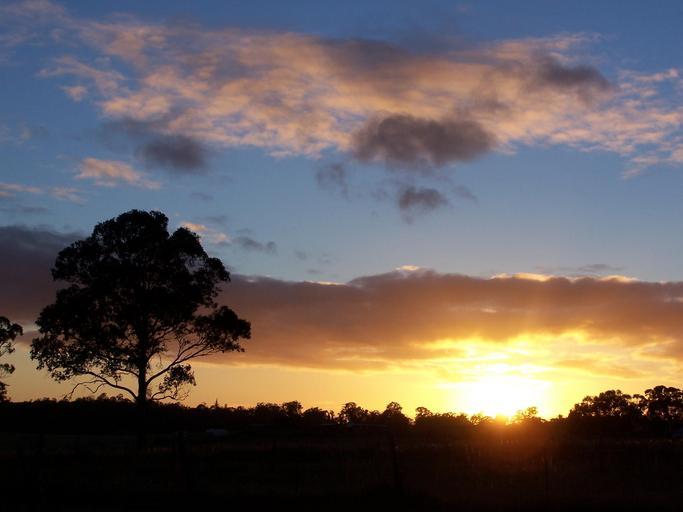Introduction
Faceless self-portraits have emerged as a compelling trend in modern art, captivating the hearts and minds of both artists and audiences alike. These enigmatic pieces invite viewers into a realm where identity becomes fluid, and the absence of a recognizable face allows for deeper introspection and interpretation. As we navigate through this artistic landscape, we will explore the intricate relationship between self-identity, emotion, and the aesthetics of faceless self-portraits. This article will delve into various aspects of this fascinating genre, from its historical roots to contemporary interpretations, providing insights that highlight why these artworks resonate so profoundly today.
The Allure of Faceless Self-Portraits in Modern Art
In an age where visual communication dominates our lives, the allure of faceless self-portraits speaks volumes about our desire for authenticity while grappling with anonymity. Artists utilize this approach to strip away superficial identifiers like facial features, allowing the viewer to forge their connections with the artwork. It raises intriguing questions: What does it mean to depict oneself without a face? How do these works challenge traditional notions of identity?
Historical Context: The Evolution of Self-Portraiture
Self-portraiture isn't a new concept; it has been around for centuries. Historically, artists like Rembrandt and Van Gogh used self-portraits as a means to convey their emotions and explore their identities. With time, however, societal norms shifted significantly. In modern art movements such as Impressionism and Surrealism, artists began experimenting with abstraction and emotional expression rather than mere likeness.
The Role of Anonymity in Artistic Expression
Anonymity has always played a crucial role in art. In modern times, faceless self-portraits emphasize the artist's internal struggles over their external appearance. This anonymity creates an atmosphere that encourages viewers to ponder deeper meanings behind the artwork.
Contemplative Photography: A New Perspective on Self-Portraiture
What is contemplative photography? It's an approach that invites individuals to slow down and observe their surroundings more thoughtfully. When applied to self-portrait photography, this technique encourages artists to reflect on their emotions and state of mind rather than just capturing a physical likeness.
The Intersection Between Contemplative Photography and Faceless Self-Portraits
Faceless self-portraits inherently carry elements of contemplative photography by urging viewers to engage with the artwork on a personal level. This genre often emphasizes mood over identity; thus, it invites contemplation on themes like solitude, introspection, and vulnerability.
Fine Art Photography: Blurring Boundaries
Fine art photography encompasses various styles and approaches aimed at conveying ideas or emotions rather than merely documenting reality. Within this realm lies fine art self-portrait photography—an expressive avenue that allows photographers to communicate complex narratives through imagery.

The Aesthetic Appeal of Faceless Self-Portraits
Aesthetic photos to print often transcend traditional beauty standards by focusing on composition, color palettes, and emotional resonance instead of recognizable features. This aesthetic quality enhances their allure while broadening potential interpretations.
Empowering Photography: Finding Strength in Anonymity
Faceless self-portraits can serve as empowering statements for many artists who feel marginalized or unheard within society. By removing facial features—an often definitive aspect of identity—artists reclaim agency over how they present themselves.
Quiet Pictures Aesthetic: Evoking Emotion Through Simplicity
The quiet pictures aesthetic emphasizes minimalism—a powerful tool employed by many photographers creating faceless images. Such simplicity fosters an environment ripe for reflection while inviting viewers into intimate moments captured by the artist.
Creating Your Own Faceless Self-Portrait Photography: A Step-by-Step Guide
Getting started with your own faceless self-portrait photography can be both exciting and daunting. Here’s a handy guide:
1. Set Your Intentions
- Ask yourself what you want your photograph to convey. Consider emotions or themes you want to explore.
2. Choose Your Setting
- Location plays a vital role; choose spaces that resonate with your chosen theme. Think about natural vs artificial light sources affecting mood.
3. Experiment with Composition
- Use leading lines or framing techniques that draw attention away from your face. Incorporate props or clothing that symbolize aspects of your identity without showing your face.
4. Focus on Angles
- Play with angles that obscure your facial features. Try capturing reflections or shadows instead; these elements can evoke mystery.
5. Post-processing Techniques
- Use editing software to enhance colors or textures. Experiment with filters that align with your vision while maintaining emotional integrity.
6. Reflect on Your Work
- Review your images critically after some time has passed. Consider writing about what each piece represents emotionally for you personally.
Notable Artists Exploring Faceless Self-Portraits
Throughout history and into contemporary practice, numerous artists have embraced facelessness within their work:
1. Francesca Woodman
Known for her ethereal black-and-white photographs where she often obscures her face or blends into her surroundings—creating haunting narratives filled with emotion.
2. Elizaveta Porodina
Her striking compositions frequently feature subjects turned away from the camera or hidden behind fabric—evoking feelings tied closely to themes like femininity and vulnerability.
3. Nanna van Blaaderen
Explores identity through subtle gestures capturing moments where faces are intentionally left out—her work challenges conventional expectations surrounding beauty standards today.
4. Li Hui
Utilizes digital manipulation techniques alongside traditional methods—creating mesmerizing visuals steeped deeply in cultural references yet devoid entirely of any recognizable features from her subjects’ visages!
The Psychological Impact of Facelessness in Art
Why do faceless self-portraits evoke such strong emotional responses?
Exploring Identity Issues
These artworks often resonate deeply because they address universal human experiences related closely tied back toward psychological constructs surrounding individual perceptions regarding one's sense-of-self versus societal expectations imposed externally upon us all!
Feelings Associated With Anonymity
Being anonymous brings forth feelings ranging anywhere between freedom (from judgment) up towards anxiety (over not being seen)—but ultimately leads toward empowerment when done effectively!
Aesthetic Choices: Color Palettes & Textures in Faceless Portraits
Imagery isn’t just about what’s shown—it’s also influenced heavily by aesthetic choices made throughout every stage involved during creation!
| Color Palette | Emotional Impact | |---------------|------------------| | Soft Pastels | Calm & Serene | | Dark Tones | Mystery & Intrigue| | Bright Hues | Joy & Vitality |

The Allure Continues: Future Trends in Faceless Artistry
As we look ahead toward future trends shaping artistic landscapes globally—we're likely going witness even greater experimentation occurring across genres including fine art photography!
Will there be new technologies developed allowing further exploration surrounding anonymity? How might emerging movements redefine existing parameters defining what constitutes ‘self’?
FAQs
1. What defines faceless self-portraits?
Faceless self-portraits are images where the subject's face is obscured or absent altogether; they focus on conveying emotions rather than physical identity.
2. How do I create my own faceless self-portrait?
Begin by setting intentions around what you wish to communicate through imagery before choosing settings/props/angles which support those ideas without revealing facial features directly!
3. What is contemplative photography?
Contemplative photography encourages individuals to slow down & observe their surroundings thoughtfully—leading toward deeper connections experienced within captured moments!
4. Can faceless portraits be empowering?
Absolutely! Many find strength within anonymity since it allows them reclaim agency over how they present themselves outside typical societal confines placed upon individuals based solely upon physical appearances alone!
5. Are there specific color palettes best suited for emotional impact?
Yes! Each palette evokes different feelings—from calm softness derived from soft pastels toward mystery found within darker tones—all playing significant roles influencing viewer responses during engagement levels experienced overall!

6. Why does anonymity resonate deeply in modern art?
Anonymity resonates due largely because it addresses universal human experiences relating closely tied back toward individual perceptions concerning one’s sense-of-self against societal expectations imposed externally upon us all!
Conclusion
In conclusion, the allure of faceless self-portraits encapsulates much more than mere artistic expression; it serves as a powerful commentary on identity, vulnerability, and introspection within contemporary society's visual landscape today! As artists continue pushing boundaries exploring depths previously uncharted within realms connecting inwardly towards authentic selves—we're bound witness transformative shifts occurring right before https://www.oskuleinonenphotography.com/Portfolio our eyes! So take some time reflecting upon what inspires YOU personally…who knows—the next compelling piece may very well emerge straight outta YOUR own creative journey!